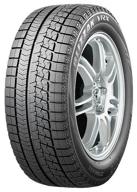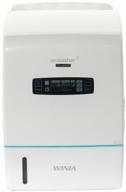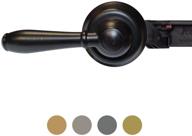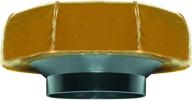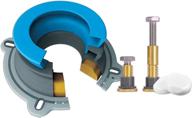Troubleshooting Common Toilet Problems
Toilets are fixtures we often take for granted, until something goes wrong. Luckily, many common toilet problems are easy to diagnose and repair on your own. This guide will walk you through troubleshooting the most frequent toilet issues.
Similar products
Running Toilet
If your toilet continuously runs after flushing, the cause is likely a faulty flapper valve. This seal at the bottom of the tank prevents water from flowing into the bowl until you flush. When worn out, the valve fails to make a tight seal, resulting in water constantly trickling into the bowl.
- First check for any obstructions under the flapper. Clear out any dirt or buildup.
- Examine the chain connecting the flapper to the flush handle and make sure it's not too tight or catching.
- If that doesn't solve the issue, replace the flapper valve, which is an easy fix.
Leaky Toilet
Water pooling around the base of your toilet indicates a leak. This is often caused by a damaged toilet wax ring, which seals the connection between the toilet and drainpipe. If the ring is cracked or worn, water can leak through.
- Turn off the water supply valve under the tank and flush to empty.
- Inspect the bolts holding the toilet down - tighten if loose.
- Lifting the toilet, check the wax ring for cracks. Replace if needed.
Clogged Toilet
A clogged toilet that won't flush or empties slowly could have a blockage in the trapway or drain pipe. Try these remedies:
- Use a plunger vigorously to clear the clog.
- Pour a bucket of water into the bowl from waist height to flush out debris.
- Use an auger (toilet snake) to reach deeper blockages.
- Clear hairs or objects caught under the rim jets.
For chronic clogs, inspect the drain pipes under the toilet for obstructions. Tree roots growing into pipes can often cause recurring clogged toilets.
Another interesting products
Noisy Toilet Fill Valve
As a toilet refills after flushing, a high-pitched squealing or whistling noise may occur if the fill valve is faulty. This valve controls the refill water flow from the tank into the bowl.
- Remove the tank lid and flush the toilet, listening for the location of the noise.
- If coming from the fill valve, check the assembly for damage or corrosion.
- Try cleaning built-up mineral deposits around valve openings.
- Replace the entire fill valve if flapper adjustments don't resolve the issue.
Loose Toilet Seat
Loose toilet seats can rock back and forth, which can eventually damage the connecting hardware. This problem is usually caused by loose toilet seat bolts.
- Tighten the nuts under the toilet bowl rim with a wrench.
- If still loose, remove the seat and inspect the condition of the bolts and hinges.
- Replace damaged bolts and reinstall the seat, tightening the nuts securely.
With some simple fixes, you can solve most common toilet troubles yourself. But if problems persist, don't hesitate to call in a professional plumber.
Noisy Toilet Fill Valve
A noisy toilet can be annoying and disruptive. A common source of toilet noise is the fill valve. Located inside the toilet tank, this valve controls the flow of water from the supply line to refill the tank after flushing.
What Causes a Noisy Fill Valve?
As the fill valve opens to let water into the tank, turbulence and pressure can cause whistling or screeching noises if any part of the valve is obstructed, loose or worn out. Some potential causes include:
- Mineral deposits or sediment buildup in valve
- Damaged float ball or arm
- Corroded/damaged valve head
- Loose valve nut connecting to toilet supply line
How to Fix a Noisy Fill Valve
Fixing a noisy fill valve is usually a quick and simple job. Here are the steps:
- Turn off water supply - Locate the shutoff valve below the tank and turn it clockwise to shut off water.
- Flush the toilet - Empty the tank completely so no water is left inside.
- Inspect fill valve - Remove tank lid and examine the valve for any visible issues. Give the valve a shake to check if anything is loose.
- Clean valve openings - Use a scrub brush or rough towel to clear any dirt, debris or mineral buildup.
- Check float ball - Ensure float ball can move up and down freely. Bend float arm if needed.
- Tighten nut - Use pliers or wrench to tighten the valve nut connecting it to the water supply line.
- Turn on water - Turn supply valve back on and let tank refill. Flush to test noise level.
Top products in 🚽 Toilet Parts
When to Replace the Fill Valve
If cleaning the fill valve and tightening everything does not stop the noise, the valve likely needs to be replaced. Warning signs include:
- Rust or corrosion on valve parts
- Water constantly leaking into overflow tube
- Float arm bent out of shape
- White mineral buildup that can't be scrubbed off
Replacing a toilet fill valve is a straightforward project for most DIYers. The new valve simply screws into the existing water supply without any soldering needed. Be sure to get an identical fill valve design to swap out the old one easily.
With a little investigation and some simple maintenance, you can likely resolve a noisy fill valve and enjoy a quieter bathroom again.
Loose Toilet Seat
Having a toilet seat that rocks, shifts, or won't stay upright is annoying and unsanitary. Loose toilet seats are typically caused by loose bolts or hardware.
Inspecting a Loose Toilet Seat
- Try tightening the nut under the toilet bowl rim first. Use a wrench or pliers to tighten it.
- If still loose, remove the seat and inspect the condition of the plastic nuts and bolts holding it down.
- Check if the bolts are broken, corroded, or cannot hold the nut properly.
- Also examine the hinges attaching the seat and lid to see if they are intact and functional.
How to Fix a Loose Toilet Seat
If the bolts and hinges are damaged, here are the steps to fix a loose toilet seat:
- Turn off toilet water supply - Locate shutoff valve below tank and turn clockwise to shut off water.
- Remove old seat - Unscrew the nuts under the bowl and detach the seat and lid.
- Clean area - Wipe away any gasket residue or buildup from bowl surface.
- Install new bolts - Insert new plastic or metal bolts into open slot channels.
- Attach seat - Set bowl and lid back onto bolts, adding a new wax ring if needed.
- Tighten nuts - Tighten nuts using a wrench alternately until secure.
- Reconnect water - Turn supply valve back on and test seat stability.
Tips for Preventing Loose Seats
- Pre-drill holes into slot channels to ease bolt insertion.
- Ensure bolts are perpendicular to the bowl, not on an angle.
- Tighten nuts gradually and evenly to prevent cracking bowl.
- Check seat tightness periodically to catch looseness early.
- Consider a soft close seat to prevent slamming and loosening over time.
Take care not to overtighten nuts or bolts when securing the seat, as this can crack the porcelain bowl. If the looseness cannot be fixed by simply tightening or replacing hardware, the entire toilet seat and/or bowl may need replacement.
Tank Lid Won't Close Properly
It can be frustrating when the tank lid on your toilet doesn't close or sit flush against the tank. A gaping toilet is not only unsightly but can allow odors into the bathroom. There are a few common causes for a tank lid not closing properly.
Corrosion on Lid Supports
The thin metal pieces that the tank lid rests on can become corroded over time. This can prevent the lid from sitting flat:
- Inspect the supports and clean off any rust or mineral deposits with a scrub brush or steel wool.
- If corroded, try bending the supports gently to regain the proper shape.
- Badly corroded supports should be replaced for proper lid closure.
Obstructed Chain or Lever
The lift chain or flush lever can get in the way of closing if caught under the lid:
- Make sure the chain and arm have enough slack and are hanging freely inside the tank.
- Bend the rod that the lever is mounted on so it aligns better with the tank side.
- Reposition overly long chains by removing links if needed.
Defective Tank Lid Itself
Issues with the lid itself like cracks, warping or detaching hardware can prevent proper closure:
- Inspect lid for cracks and replace if any are found.
- Realign or tighten any loose or detached lid hardware.
- File down spots on underside of lid if small warps are present.
- Use plastic epoxy on minor cracks; replace lid if damage is beyond repair.
Bolts Attaching Tank to Bowl
The long bolts underneath the tank that secure it to the bowl can also get in the way if sticking up too far:
- Loosen the nuts and push bolt heads down flush with surface if possible.
- Cut excess length off bolts if necessary to provide clearance.
With some adjustments and part replacements where needed, you can get a toilet tank lid closing smoothly and sealing properly again. This simple maintenance can restore functionality and improve bathroom aesthetics.
Toilet Won't Flush Properly
Toilets that don't flush fully or effectively can leave behind unsanitary waste. There are several common reasons why a toilet may not be flushing properly.
Weak Flush
A weak toilet flush often means there is insufficient water flowing into the bowl. Some causes include:
- Low water level in tank - Check float setting and adjust if needed.
- Partially clogged trapway or drain pipe - Try plunging and snaking the drain.
- Leaky flapper valve - Replace worn out rubber flapper if not sealing tightly.
- Clogged rim jets - Clean debris from the small holes under the rim.
Double Flushing
Having to flush more than once to clear the bowl points to an issue like:
- Low-flow toilet - May require dual flush system to work effectively.
- Improper siphon jet size - Wrong siphon jet affects flush power.
- Tank not filling fully - Check fill valve operation and float setting.
- Mineral buildup - Check rim jets and siphon jet for calcium deposits.
Backups and Overflow
Water backing up or spilling into the overflow tube usually indicates a blockage:
- Blocked trapway - Use auger or plunger to clear clog.
- Blocked drain line - May require professional drain cleaning.
- Nesting item - Remove any object stuck in trapway.
- Damaged internal parts - Replace any flush valve or siphon components if broken.
Pinpointing the specific reason your toilet won't flush properly is key to getting it working optimally again. Start by checking simple fixes like flappers and float levels before moving on to deeper issues involving blockages or part replacement.
Must-Have Toilet Repair Parts
Having a few key toilet parts on hand can save the hassle of emergency trips to the hardware store when a toilet fails. Here are some must-have repair parts to be prepared for common toilet issues.
Flapper Valve
The rubber flapper valve at the bottom of the tank is one of the most likely parts to need replacing over time. As the flapper wears out, it can cause leaks and poor flushing. Keeping a replacement flapper on hand ensures you can fix tank leaks and weak flushes quickly.
Fill Valve
Problems with the fill valve that refills the tank after flushing are common. Having a new fill valve allows you to replace a broken, leaky or noisy valve right away to restore normal tank function.
Toilet Seat
Loose, broken, or cracked toilet seats should be replaced. Keeping spare toilet seat bolts and nuts allows you to install a new seat if the original bolts are damaged or corroded.
Toilet Flush Handle
If the flush arm or handle that connects to the flapper breaks, replace it immediately so the toilet can be flushed. Generic flush handle kits fit most toilets.
Toilet Supply Line
Leaky or burst supply lines that connect the fill valve to the water supply can flood a bathroom quickly. Having a replacement toilet supply line allows for fast replacement if the original springs a leak.
Toilet Wax Ring
Damaged or cracked wax rings lead to leaks between the toilet and floor flange. Keep a new wax ring to reseal the toilet bowl to the drainpipe if leaks occur.
Toilet Bowl Bolts
Rusty or deteriorated bolts that hold the toilet to the floor flange should be replaced to stabilize the toilet. Keep spare stainless steel bolts on hand for easy swap out.
With these basic toilet repair parts on hand, you can tackle most common toilet issues yourself and avoid paying for an expensive plumber visit.
Toilet Flush Handle
The flush handle of a toilet is an important part that sees frequent use. Over time, this handle can become loose or damaged. Replacing a faulty flush handle is an easy DIY fix.
How a Toilet Flush Handle Works
The flush handle attaches to a metal or plastic arm inside the toilet tank. This arm pulls up on the flapper chain when the handle is pushed down. The flapper then opens to release the water from the tank into the bowl for flushing.
Signs of a Bad Toilet Flush Handle
- Handle is loose and shifts position
- Handle movement is stiff or sticky
- Handle does not properly open flapper when pushed
- Rust or mineral deposits on metal handle
- Cracks or breaks in plastic handle
Replacing a Toilet Flush Handle
- Turn off toilet water supply valve.
- Remove tank lid and disconnect flapper chain from handle arm.
- Unscrew nut holding handle to tank or handle arm.
- Remove old handle and arm.
- Install new handle according to package directions.
- Reconnect flapper chain and turn water back on.
Choosing a New Toilet Handle
- Match style and finish of existing handle/bathroom
- Look for durable, corrosion-resistant metal
- Select comfortable shape and size
- Consider a dual flush handle if installing that system
Replacing an old, worn out flush handle restores proper flushing function to the toilet. It also enhances the appearance of the toilet with a shiny new handle. Be sure to test the flush after installing to ensure proper operation.
Kohler Flush Valve Parts Diagram
Here is a parts diagram for Kohler flush valves:
The parts diagram can be found in the "Toilets Service Parts" brochure provided by Kohler. The brochure includes a list of replacement part numbers for the float/fill valve, flush valve, tank gasket, and flush ball/flapper for each toilet. The brochure also provides information on how to determine your toilet's flushing technology and how to find the right replacement parts. If you cannot find the part you need in the brochure, you can visit Kohler's website to search for service and replacement parts. Additionally, PlumbingSupply.com provides a detailed picture list of Kohler toilet models and repair parts, including the Kohler Elliston toilet.
Kohler Toilet Seat Parts
If you are looking for Kohler toilet seat parts, there are several options available to you. Here are some places where you can find Kohler toilet seat parts:
- Amazon: You can find a variety of Kohler toilet seat parts on Amazon, including hinges, screws, nuts, and bolts.
- Home Depot: Home Depot offers a range of Kohler toilet hardware, including toilet seat parts. You can buy online and pick up in-store or have the parts shipped to your home.
- Kohler website: You can search for Kohler toilet seat parts on the Kohler website by product number, name, or by uploading a photo. The website also offers a chat feature to help you find the right parts.
- Lowe's: Lowe's carries a selection of Kohler toilet hardware and accessories, including toilet seat parts. You can shop online or visit a store near you.
- Guillens: Guillens is an authorized dealer for Kohler toilet seat parts, including brackets, hinges, and mounting nuts and screws. You can shop online or contact them for assistance.
Whether you need to replace a broken hinge or bolt, or you want to upgrade your toilet seat hardware, these options can help you find the Kohler toilet seat parts you need.
Kohler Toilet Seat Hinges Replacement Parts
If you need to replace the hinges on your Kohler toilet seat, there are several options available to you. Here are some places where you can find Kohler toilet seat hinge replacement parts:
- Amazon: You can find a variety of Kohler toilet seat hinge replacement parts on Amazon, including plastic and metal hinges.
- Kohler website: You can search for Kohler toilet seat hinge replacement parts on the Kohler website by product number, name, or by uploading a photo. The website also offers a chat feature to help you find the right parts.
- Walmart: Walmart offers a selection of Kohler toilet seat hinge replacement parts online.
- General Plumbing Supply: General Plumbing Supply offers the Kohler 1267952-0 toilet seat hinge kit.
- Quality Plumbing Supply: Quality Plumbing Supply offers the Kohler 1150464-7 toilet seat hinge kit in black.
- Guillens: Guillens is an authorized dealer for Kohler toilet seat hinge replacement parts, including brackets, hinges, and mounting nuts and screws.
Whether you need plastic or metal hinges, black or white, these options can help you find the Kohler toilet seat hinge replacement parts you need.






